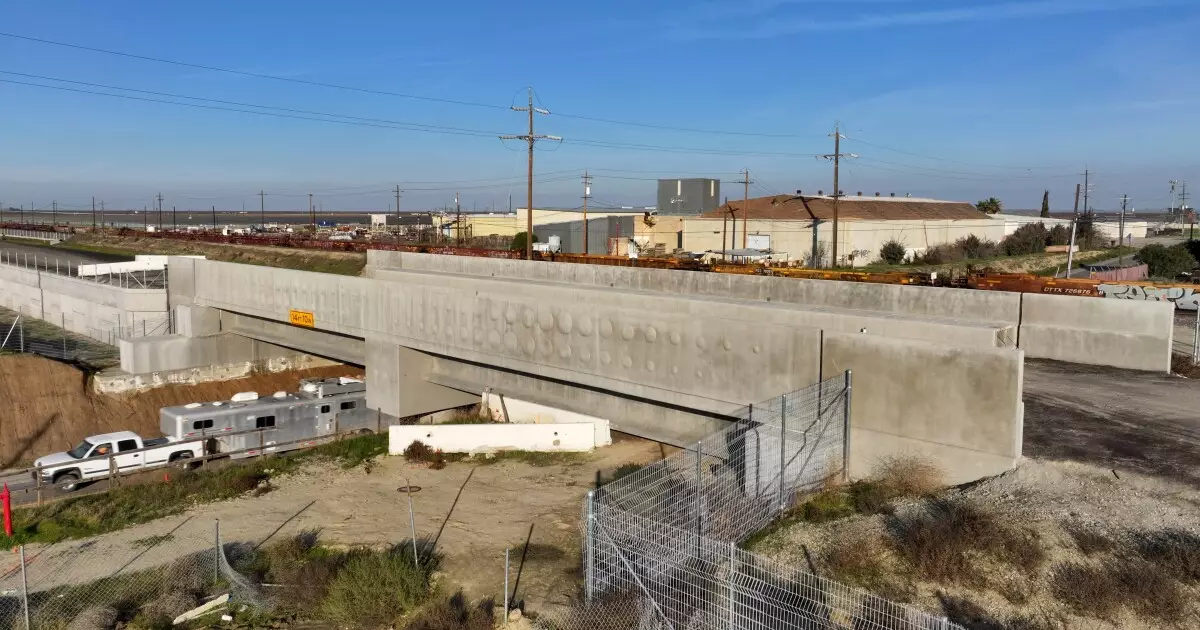The California High-Speed Rail (CHSR) project has been a point of contention since its inception, but the latest announcement from the Trump administration marks a new chapter in its rocky history. With Transportation Secretary Sean Duffy leading an investigation into the CHSR, the federal government is poised to reassess the expenditure of roughly $4 billion in federal grants. This article delves into the implications of this investigation, the historical context of the project, and the broader political landscape that influences its future.
Approved by voters in 2008 with a projected cost of $33 billion, the CHSR was expected to connect San Francisco and Los Angeles, a distance of approximately 400 miles, in a matter of years. However, the optimism surrounding the project quickly dissipated as cost estimates ballooned, with the current projections nearing an astounding $128 billion. Such staggering figures raise crucial questions about fiscal responsibility, project management, and the feasibility of the high-speed rail system within the state and the nation.
The obvious discrepancies between initial budgetary projections and current estimates not only demonstrate significant mismanagement but also contribute to eroding public confidence. Proponents argue that high-speed rail is vital for California’s transportation infrastructure, while detractors, including many Republicans, see the project as a fiscal black hole, devouring taxpayer funds without delivering on its promises.
Federal Oversight: A Necessity for Accountability
The inquiry announced by Sec. Duffy seeks to ensure that the CHSR complies with the financial commitments made when it received federal support. This assessment touches on a fundamental aspect of governance: accountability. The statement highlighting that “we can’t just say we’re going to give money and then not hold states accountable” resonates beyond just this project—it’s a call for better governance practices across the board.
Federal funding comes with expectations and stipulations which, if unmet, result in consequences. Duffy underscored the potential ramifications of the investigation, which could extend to withholding funds or terminating cooperative agreements. The investigation stems from a concerning report by the CHRSA’s inspector general, indicating a significant funding gap and an “increasingly unlikely” timeline for project completion.
The Politicization of Infrastructure Projects
The CHSR debate is emblematic of broader political themes surrounding infrastructural investments in the United States. With intense partisan divides, infrastructure projects—especially large-scale ones—tend to become campaign fodder, as politicians leverage them to rally their bases. Trump’s administration has long critiqued the California bullet train, depicting it as an example of government inefficiency.
The involvement of California GOP lawmakers, including their plea for an investigation into the project, illuminates the intricate interplay between politics and public policy. They argue that such oversight is not just warranted but necessary to safeguard taxpayer money—a sentiment that, while politically motivated, reveals genuine concerns regarding the efficacy of public spending.
In response to the federal investigation, the CHSR Authority remains resolute. CEO Ian Choudri’s defensiveness reveals the tension between state-level aspirations and federal scrutiny, asserting that all funds are accounted for and emphasizing the economic benefits generated thus far. The claim of a $22 billion economic impact, primarily within the Central Valley, counters the narrative of failure surrounding the project.
However, the CHSR’s rhetoric faces a formidable challenge. As funding shortfalls deepen—potentially exceeding $99 billion for the full route—public sentiment may shift, demanding both efficacy and transparency. The reliance on alternate funding sources, such as California’s cap-and-trade system, suggests a maddening complexity that needs clearer communication to gain public trust.
The unfolding investigation into the CHSR project represents a critical moment for California’s transportation future. The culmination of audits, public accountability, and strategic funding will determine whether the ambitious vision of a high-speed rail network can be salvaged, or if it will become another cautionary tale of overpromised and underdelivered public initiatives.
While protests near the press conference signify public desire for progress, they also underscore frustration with perceived governmental ineptitude. The success of projects like CHSR may ultimately hinge not just on funding, but on building a strong framework of trust and clear communication between state authorities and the federal government, united in a shared vision for a more efficient tomorrow. The outcome of this scrutiny will significantly influence not only California’s transport landscape but also national infrastructure development going forward.

